Timeline
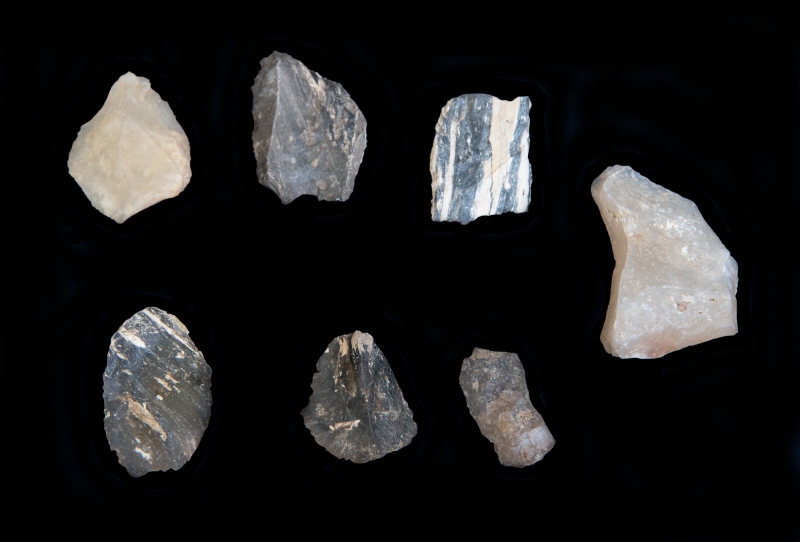
PALEOINDIAN PERIOD
13,000 to 8,500 Before Present
People lived in small groups, collecting shellfish and harvesting wild seeds. Watercraft enabled travel to the single large offshore island, Santarosae, exposed when sea level was 150 feet lower than today. The earliest people to arrive may have encountered island pygmy mammoths. Climate was cool and moist, supporting extensive pine forests. Evidence from this period is sparse but includes basketry, seagrass cordage, a seed-milling stone, beads, chert tools and a fish-like effigy. Known sites are on Santa Rosa Island (Arlington Springs 13,000 BP), San Miguel Island (Daisy Cave 11,000 BP), Vandenberg Air Force Base (9,000 BP) and near Nipomo (10,000 BP). Many coastal sites were submerged as glacial ice melted and sea level rose.
A seed-milling stone, chert tools, beads, and a fish-like stone carving were found at a 10,000-year-old site near Nipomo. This is some of the oldest evidence for human occupation in the region.
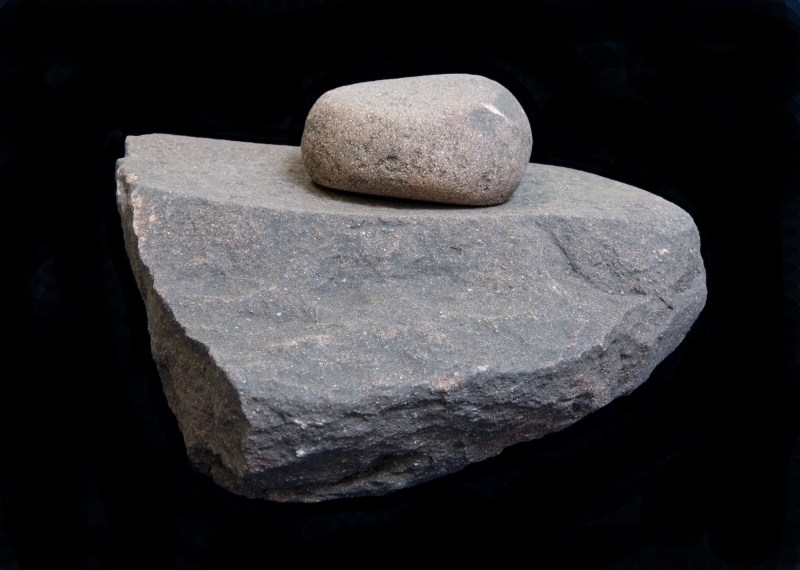
INITIAL EARLY PERIOD (MILLINGSTONE HORIZON)
8,500 to 6,500 Before Present
This period is sometimes called "Oak Grove" but is more commonly known as "Millingstone Horizon" due to the abundance of milling stones (basin metates and manos) that appeared during this time. These were used to grind the small, hard seeds of grasses and sage, which formed a major part of the diet. Shellfish-gathering continued to supply most protein, and hunting and fishing were relatively unimportant. Pine forests were still extensive, reflecting cooler, wetter climate than today. Considerably more evidence exists for occupation during this period than the previous one.
Large, shallow basin metates and handstones (manos) were the form of millingstone common in the Chumash area until about 5,000 years ago. They were used to grind small wild seeds for food.
ALTITHERMAL
6,500 to 5,000 Before Present
The climate of the Santa Barbara region became warmer and drier, and human population appears to have declined significantly. Few archaeological sites are known to date from this interval.
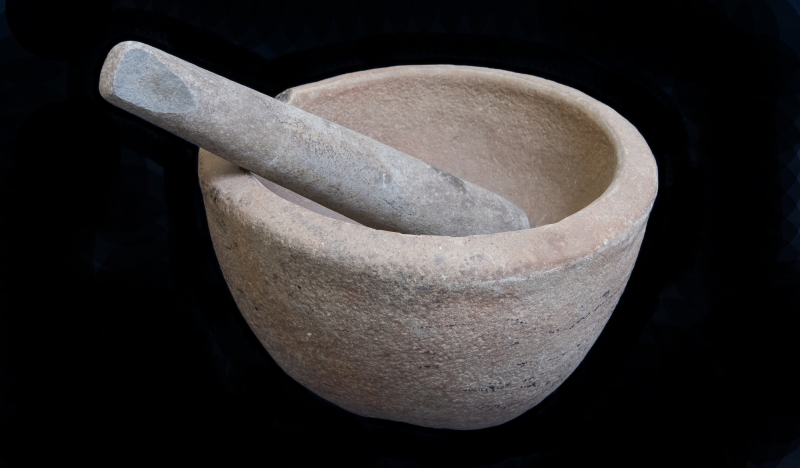
TERMINAL EARLY PERIOD
5,000 to 3,200 Before Present
This period is marked by population increase and changes in the tool kit. The appearance of stone mortars and pestles indicates that acorns had become an important food source. With large projectile points mounted on a dart thrown with the atlatl (throwing stick), people hunted large animals such as elk, deer, and sea mammals. Shellfish remained an important dietary supplement. By 5,000 BP, people speaking a "Proto-Chumash" language had become established in the Santa Barbara region; their relationship with earlier peoples is not yet clear.
The atlatl, or "spear thrower," is a weapon that has been used since ancient times by many different peoples around the world. Each group had its own word for this tool. The name atlatl comes from the Aztec (Nahuatl) language.
The atlatl is usually a flat stick 18-24 inches long, with a hand grip at one end. At the other end is a hook that fits in a socket in the back of a spear or dart. The atlatl is held next to the shoulder and acts as an extra joint to the hunter's arm, moving the spear with great force.
This weapon can be very accurate. The Inuit hunted walruses with the atlatl, and African people have found that it can pierce an elephant's hide! In the Chumash region, the atlatl was used in hunting for thousands of years until the weapon was replaced by the bow and arrow about A.D. 500.
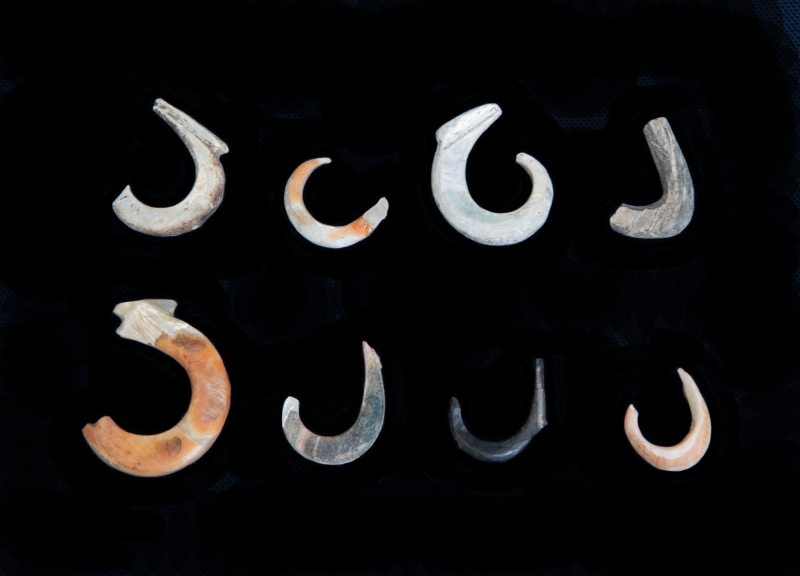
MIDDLE PERIOD
3,200 to 800 Before Present
Fishing and sea mammal hunting became more important. New inventions, including shell hooks and barbed harpoons, enabled the Chumash to catch a wider variety of fishes. A very significant innovation occurred about 2,000 BP -- the tomol, or plank canoe. Intensified fishing led to population increase and large, permanent coastal settlements. For hunting and defense, the bow and arrow replaced the atlatl and dart about 1,500 BP. Two long droughts affected much of Southern California, the Great Basin and Southwest between about 1,100 and 700 BP. Warfare increased at this time due to competition over scarce resources.
Mortar and pestle made from sandstone were used for grinding and processing acorns or seeds.
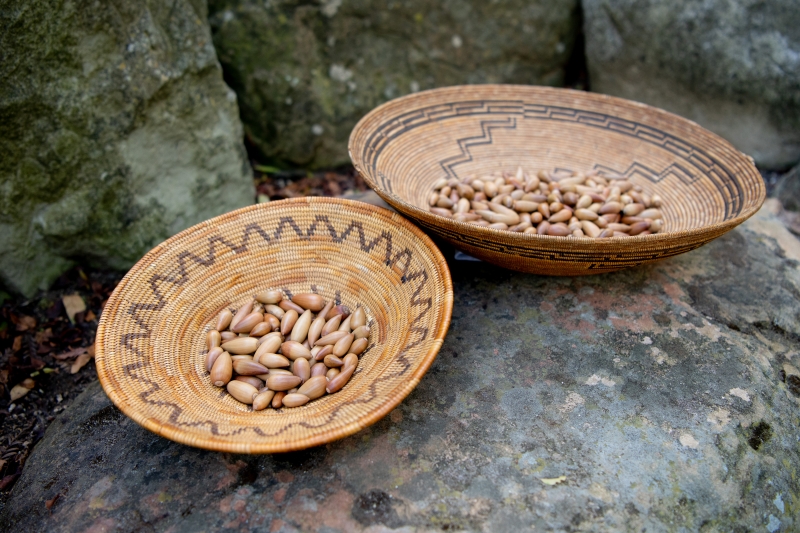
LATE PERIOD
800 years Before Present to Missionization
Marine fishing remained a major part of Chumash subsistence. Sardines taken with nets were particularly important. Hunting of land animals and gathering of wild plants -- including acorns and various seeds -- supplemented the marine diet. Growth of seed-bearing plants was promoted through selective burning. Two-thirds of the Chumash population lived near the coast. Use of shell bead money, produced mostly on the Northern Channel Islands, indicates increased importance of trade between communities to buffer local shortfalls of wild food resources. Warfare resulting from trespass in hunting-gathering-fishing territories was prevalent at the time of European contact. Missionization of the Chumash, which took place from AD 1772 to 1822, resulted in abandonment of many former subsistence practices in favor of agriculture and animal husbandry.
The Indians on Santa Catalina Island carved these stone pots from steatite, a soft, easily worked soapstone which they quarried on the island. These heat resistant cooking vessels were traded to the Chumash of the Northern Channel Islands and to people on the mainland coast, in exchange for local resources.
About This Site
This website contains resources about Chumash traditional cultures collected by Santa Barbara Museum of Natural History staff for the use of teachers and students. Visit the other pages to learn more:

